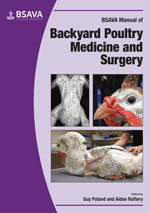
Full text loading...

In avian medicine, the post-mortem examination is a valuable part of the diagnostic work-up. The findings in one animal may help others in a collection. This chapter describes the steps in a postmortem examination and provides a broad overview of possible interpretations of some common lesions.
Post-mortem examination, Page 1 of 1
< Previous page | Next page > /docserver/preview/fulltext/10.22233/9781910443194/9781910443194.25-1.gif

Full text loading...


















































